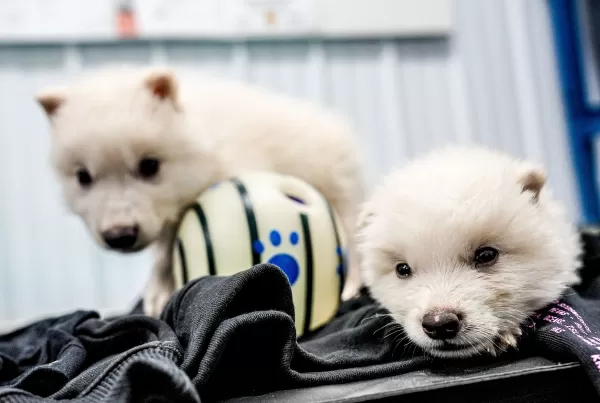Bringing a super-sized canine back from extinction after 12,500 years might sound like the plot of a blockbuster movie filled with special effects and suspense, but it has become a reality thanks to the efforts of Colossal Biosciences. This biotech company has successfully reintroduced the dire wolf to the world, with three of these majestic creatures—Romulus, Remus, and their younger sister Khaleesi—now residing in a secret location in the US. These dire wolves, resembling the iconic creatures from "Game of Thrones," were created using the DNA of the common gray wolf, advanced gene-editing techniques, and domestic dog surrogates.

Ben Lamm, CEO of Colossal Biosciences, expressed immense pride in the team's achievement, stating, "This massive milestone is the first of many coming examples demonstrating that our end-to-end de-extinction technology stack works." The team's success involved extracting DNA from a 13,000-year-old tooth and a 72,000-year-old skull to create healthy dire wolf puppies. Lamm likened their advanced technology to magic, underscoring its potential impact on conservation efforts.

Colossal Biosciences isn't new to making headlines; they previously engineered a "Colossal Woolly Mouse," a mouse with a mammoth-like phenotype, using computational analysis of numerous mammoth genomes. Critics argue that the dire wolves are essentially normal wolves in fancy dress, suggesting that the existing dire wolf DNA might not be sufficient to create a true genetic clone.
However, the company's mission extends beyond creating viral sensations and exotic pets. Colossal Biosciences aims to apply its findings to help preserve current species for future generations. Dr. Christopher Mason, a scientific advisor and board member, emphasized the transformative potential of de-extinction technology, stating, "The same technologies that created the dire wolf can directly help save a variety of other endangered animals as well. This is an extraordinary technological leap in genetic engineering efforts for both science and for conservation as well as preservation of life."
The dire wolves, Romulus, Remus, and Khaleesi, live on a 2,000+ acre preserve vetted by the American Humane Society and the USDA. They are cared for by a dedicated staff, ensuring their well-being and the success of this groundbreaking project.































